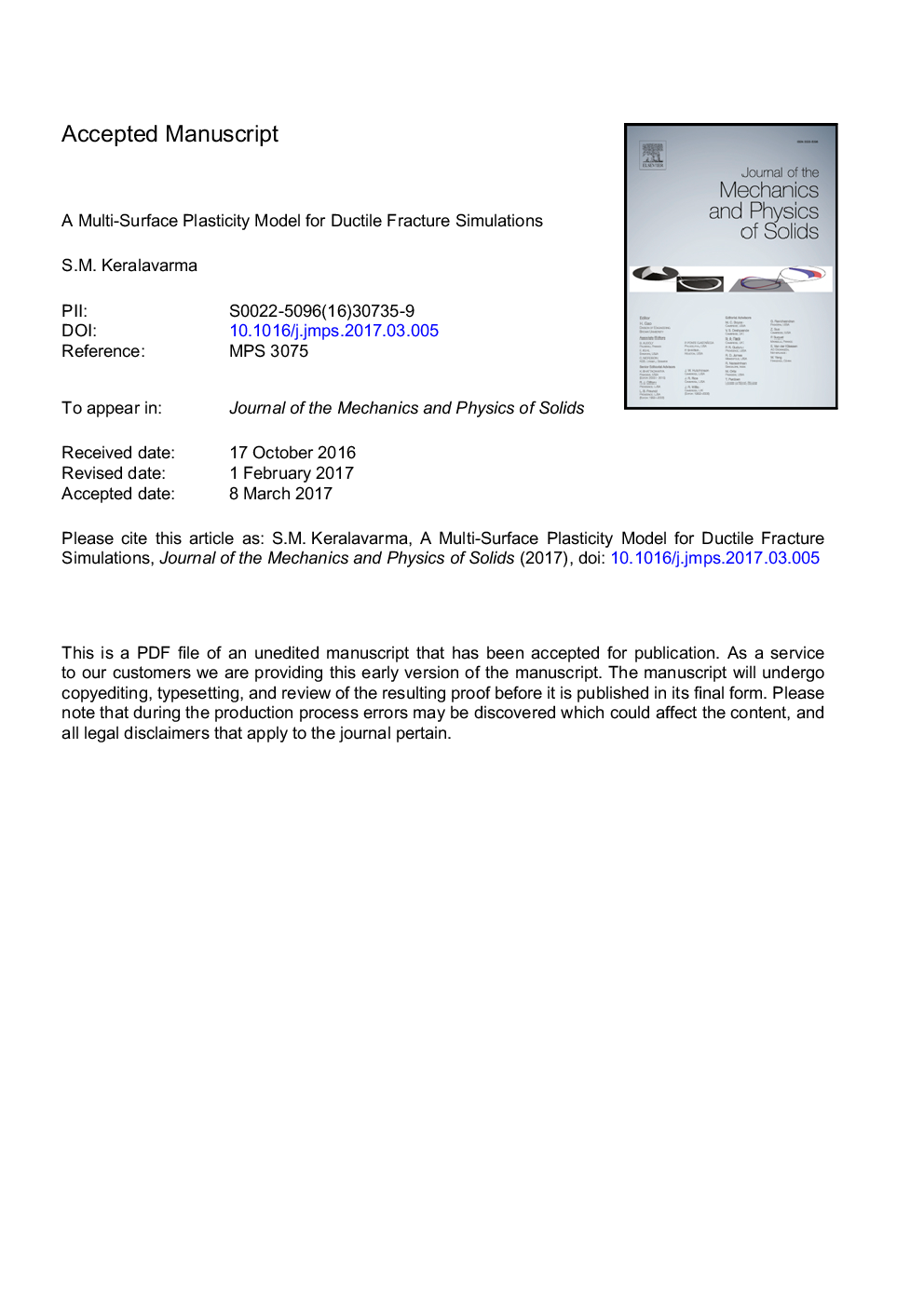| Article ID | Journal | Published Year | Pages | File Type |
|---|---|---|---|---|
| 5018282 | Journal of the Mechanics and Physics of Solids | 2017 | 36 Pages |
Abstract
The growth and coalescence of micro-voids in a material undergoing ductile fracture depends strongly on the loading path. Void growth occurs by diffuse plasticity in the material and is sensitive to the hydrostatic stress, while void coalescence occurs by the localization of plastic deformation in the inter-void ligaments under a combination of normal and shear stresses on the localization plane. In this paper, a micromechanics-based plasticity model is developed for an isotropic porous material, accounting for both diffuse and localized modes of plasticity at the micro-scale. A multi-surface approach is adopted, and two existing plasticity models that separately account for the two modes of yielding, above, are synthesized to propose an effective isotropic yield criterion and associated state evolution equations. The yield criterion is validated by comparison with quasi-exact numerical yield loci computed using a finite elements based limit analysis procedure. It is shown that the new criterion is in better agreement with the numerical loci than the Gurson model, particularly for large values of the porosity for which the loading path dependence of the yield stress is well predicted by the new model. Even at small porosities, it is shown that the new model predicts marginally lower yield stresses under low triaxiality shear dominated loadings compared to the Gurson model, in agreement with the numerical limit analysis data. Predictions for the strains to the onset of coalescence under proportional loading, obtained by numerically integrating the model, indicate that void coalescence tends to occur at relatively small plastic strain and porosity levels under shear dominated loadings. Implications on the prediction of ductility using the new model in fracture simulations are discussed.
Keywords
Related Topics
Physical Sciences and Engineering
Engineering
Mechanical Engineering
Authors
Shyam M. Keralavarma,
